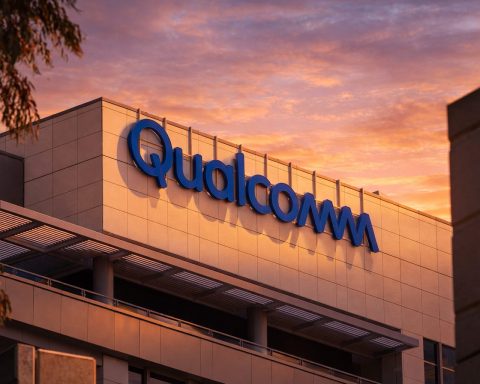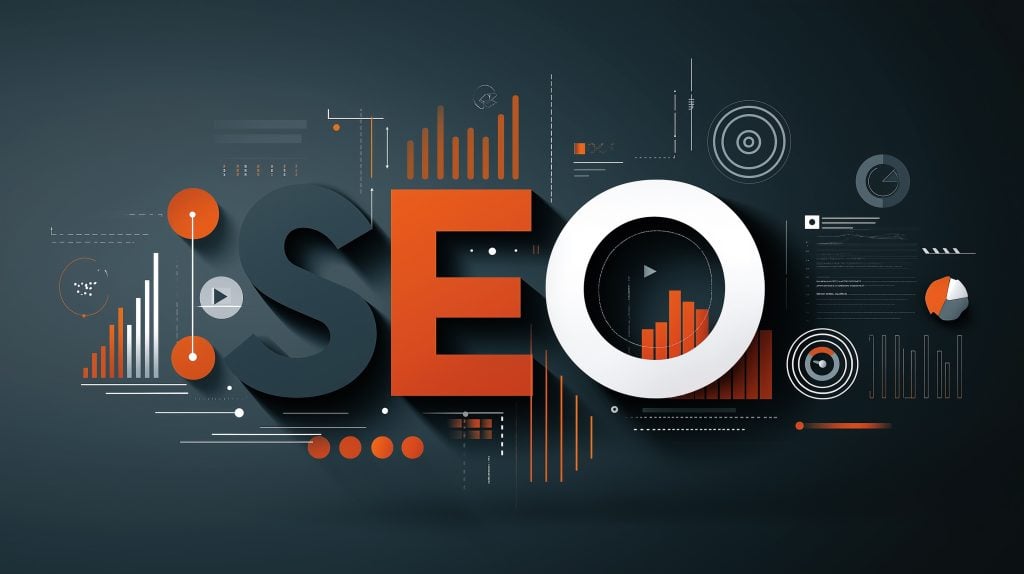- Late 2024, the first FDA-approved CRISPR-based therapy exagamglogene autotemcel (Casgevy) reached patients, with Vertex reporting $2 million in revenue from this sickle-cell gene-editing therapy in Q3 2024.
- Prime Medicine’s PM359 autologous CRISPR prime-edited cell therapy for chronic granulomatous disease began a Phase I/II study in 2024, with initial first-in-human data expected in late 2025.
- Wave Life Sciences’ RNA base-editing drug WVE-006 showed proof-of-mechanism in humans in 2024, and multi-dose trial data are anticipated in 2025.
- In April 2025, the FDA approved Abeona Therapeutics’ Zevaskyn, the first cell-based gene therapy for the rare skin disorder RDEB, with launch planned in Q3 2025 at a list price of $3.1 million.
- Ultragenyx’s Hemophilia A gene therapy (PHA transgene) has an FDA decision due by August 2025.
- Novo Holdings’ January 2025 acquisition of Catalent for $16.5 billion secures manufacturing capacity for Novo Nordisk’s GLP-1 drugs Ozempic and Wegovy.
- Johnson & Johnson’s January 2025 acquisition of Intra-Cellular Therapies for $14.6 billion enhances its Caplyta-focused neuroscience portfolio.
- Merck KGaA’s April 2025 acquisition of SpringWorks Therapeutics for $3.9 billion strengthens its rare oncology pipeline.
- Novartis agreed to acquire Regulus Therapeutics for up to $1.7 billion in April 2025, adding RNA-targeted therapies to its pipeline.
- AstraZeneca’s March 2025 purchase of EsoBiotec for up to $1.0 billion expands in vivo CAR-T cell therapy capabilities.
Introduction: A Transformative Mid‑Year in Biotech and Health Tech
The first half of 2025 has seen biotechnology and health technology sectors accelerate on multiple fronts, from groundbreaking scientific advances to robust deal-making. Industry optimism is high – a Deloitte survey of 150 life science executives found 75% believe 2025 will be a strong year, citing anticipated revenue growth and rapid innovation [1]. This optimism is translating into action, with emerging technologies like gene editing, precision medicine, digital health, and AI reaching new milestones. Meanwhile, global market projections remain bullish: for example, the AI in healthcare market is projected to grow about 10-fold from ~$15 billion in 2024 to over $164 billion by 2030 (nearly 50% CAGR) [2], and the digital health market is expected to soar past $1 trillion by the early 2030s [3].
Biotech companies are capitalizing on scientific breakthroughs and improving financial conditions. Venture capital funding is rebounding after a post-pandemic dip – in Q1 2025, healthtech startups raised $3.5 billion across 185 deals (up 30% QoQ), even minting five new unicorns [4] [5]. At the same time, large corporations and investors are pursuing strategic acquisitions and partnerships to gain cutting-edge capabilities. In short, 2025’s mid-year snapshot reveals a dynamic landscape: gene and cell therapies are reaching patients, AI is becoming embedded across R&D and care delivery, wearables and digital health tools are mainstreaming, and regulators are grappling with how to keep up with the pace of innovation.
In the sections below, we delve into key sub-sector trends – gene editing, precision medicine, digital health & wearables, AI in healthcare, synthetic biology, diagnostics & multi-omics – and review major product launches, scientific advances, regulatory updates, funding trends, and M&A activity so far in 2025. We also highlight insights from industry experts and present data-driven forecasts for the second half of 2025 and beyond.
Gene Editing and Gene Therapies: CRISPR’s Clinical Impact and Next-Gen Advances
Gene editing has firmly transitioned from the lab to the clinic in 2025. In late 2024, the first FDA-approved CRISPR-based therapy (Vertex/CRISPR Therapeutics’ exagamglogene autotemcel, brand name Casgevy®) reached patients – Vertex reported its first $2 million in revenue from this sickle-cell gene-editing therapy in Q3 2024, marking a historic commercial milestone [6]. This year, more patients are being treated with ex vivo CRISPR cures, and the industry is rapidly advancing new gene editing modalities:
- Next-generation CRISPR: Prime editing entered human trials for the first time. Prime Medicine’s lead program PM359, an autologous CRISPR prime-edited cell therapy for chronic granulomatous disease, began a Phase I/II study in 2024 [7]. Initial clinical data from this first-in-human prime editing trial are expected in late 2025, a potential landmark for precision gene correction [8]. Likewise, base editing approaches continue to progress, with companies like Beam Therapeutics and Verve Therapeutics developing base-edited therapies for blood disorders and cardiovascular disease.
- RNA editing: In 2024, Wave Life Sciences made history with the first-ever clinical demonstration of RNA editing in humans – its RNA base-editing drug WVE-006 showed proof-of-mechanism for treating alpha-1 antitrypsin deficiency [9]. In 2025, multi-dose data from this RNA editing trial are anticipated, which could validate a whole new category of therapeutic editing beyond DNA [10].
Clinical results so far are encouraging. CRISPR trials for blood disorders and cancers have reported high efficacy, and safety profiles are improving with more refined editing techniques. A February 2025 Nature report detailed a landmark case where prime-edited T cells significantly boosted immune function in a patient with a rare disease [11]. As these successes accumulate, experts are calling for scaling up access. UC Berkeley’s Dr. Fyodor Urnov argues the field must “move beyond one-mutation-at-a-time trials” and push regulators to allow multiplexed CRISPR therapies and faster IND approvals [12] [13]. He advocates establishing “CRISPR Cure Centers” blending academic and industry know-how to streamline development [14].
Meanwhile, conventional gene therapies (viral vector-based) continue to reach patients. The FDA has now approved over 30 cell and gene therapies as of early 2025, and experts predict 30–50 more approvals by 2030 [15]. Notably, in April 2025 the FDA approved Abeona Therapeutics’ new gene therapy (Zevaskyn) – the first cell-based gene therapy for the rare skin disorder RDEB, which adds a corrected COL7A1 gene via skin grafts [16] [17]. Zevaskyn will launch in Q3 2025 at a list price of $3.1 million [18], reflecting the high cost of these one-time cures. It joins other recently approved gene therapies (like Krystal Biotech’s topical gene therapy Vyjuvek, approved 2023) to offer RDEB patients dramatic wound healing [19].
Looking ahead to H2 2025, the gene therapy pipeline is rich with catalysts. Regulators are reviewing several innovative gene therapies – for example, Ultragenyx’s Hemophilia A gene therapy (PHA transgene) has an FDA decision due by August 2025 [20]. The FDA is also adopting more flexible approval pathways: in 2024 it issued new guidance to encourage use of Accelerated Approval for gene therapies for rare diseases [21]. Despite the recent resignation of CBER Director Peter Marks (a champion of aggressive gene therapy approval) in 2025, the agency “is already fully engaged” in this mission [22]. All signs indicate more gene editing and gene therapy breakthroughs on the near horizon, moving these technologies closer to mainstream clinical practice. As Dr. Urnov wrote, “in the name of all patients…we have to give CRISPR a chance… The time for reform is now.” [23] [24]
Precision Medicine and Personalized Therapeutics: Tailoring Treatment with Data and AI
Precision medicine – delivering the right treatment to the right patient based on molecular and genetic insights – continues to gain momentum in 2025. Across oncology, rare diseases, and even chronic conditions, therapies are becoming more personalized and often developed alongside biomarkers or companion diagnostics. In a Thermo Fisher survey, 51% of industry respondents identified personalized medicine as a top opportunity area for 2025 [25]. Key trends include:
- Personalized cancer vaccines and cell therapies: The year opened with intense focus on individualized cancer treatments. Pharma partners Moderna and Merck launched multiple Phase III trials of their mRNA neoantigen cancer vaccine (mRNA-4157/V940) in combination with Keytruda®, expanding into lung cancer after promising melanoma results [26] [27]. BioNTech likewise is advancing personalized mRNA vaccines in melanoma and colorectal cancer, with data readouts expected in late 2025 or early 2026 [28] [29]. As BioNTech’s CEO Ugur Sahin observed, these vaccines open a new front in oncology treatment, though he cautions “we need more success to create confidence in this technology… in the end, all these different technologies will find their place in the arsenal” [30]. In cell therapy, personalization is also rising: CAR-T immunotherapies are being tailored to each patient’s cancer profile, and new in vivo CAR-T platforms (like EsoBiotec’s, acquired by AZ in 2025) aim to simplify personalized T-cell therapy via direct injection [31] [32].
- AI-driven precision medicine: Advanced analytics are now supercharging how we identify and treat subpopulations. The integration of AI with precision medicine allows analysis of complex genomics and clinical data to guide individualized care. According to PPD’s trends report, big and small sponsors alike are leveraging AI to maximize the value of targeted therapies [33]. For example, in oncology AI can match patients to the best therapy based on tumor genetic signatures, improving success rates while avoiding needless toxicity [34]. AI is also being used in trial design and monitoring for personalized therapeutics – real-time data from patients helps adjust dosing or inclusion criteria on the fly. 63% of surveyed sponsors said they plan to outsource AI-powered monitoring of precision therapy trials to maintain safety and efficacy oversight [35].
- Genomic testing and precision diagnostics: The foundation of precision medicine is broad genomic and biomarker testing. In 2025, genome sequencing is increasingly routine. Multi-gene panels, liquid biopsies for cancer DNA, and even whole-genome sequencing are being used to stratify patients. Multi-omics approaches (combining genomics with proteomics, metabolomics, etc.) are expanding the definition of precision medicine. Notably, leading sequencing companies are evolving into multi-omics providers – for instance, Illumina “catapulted into multiomics” by acquiring single-cell analysis firm Fluent BioSciences in 2024 [36]. Illumina’s CEO Jacob Thaysen emphasizes “a lot of innovation is pushing us from being a genomics company to a multiomics company” [37]. This means future precision therapies will increasingly be informed by a holistic molecular picture of each patient.
- Long-term studies and real-world evidence: As highly personalized treatments (like gene therapies or chronic targeted drugs) come to market, there is a growing need for long-term safety/efficacy data. Companies are initiating decade-long registries and partnering with healthcare systems to gather real-world evidence. One example is the expanding use of GLP-1 agonists (initially for diabetes) in new populations – the industry is investing in long-term studies to ensure these tailored metabolic therapies remain safe as they move into broader use (cardiac, renal, obesity indications) [38] [39]. Over a third of sponsors are beefing up big-data analytics to support such long-term precision medicine studies [40].
Overall, precision medicine is becoming the norm in many therapeutic areas. In oncology, nearly 64% of drug developers are prioritizing targeted cancer therapies in their pipelines [41] [42]. Rare disease drug approvals, often requiring genetic testing, now account for a large share of FDA approvals each year. And the business case is clear: by focusing resources on high-need subpopulations (while de-prioritizing less impactful projects [43]), companies can see higher ROI and deliver transformative outcomes. With continued advances in genomics and data science, the second half of 2025 should see even more “highly individualized treatments” reach patients – fulfilling the promise of treating each patient based on their unique biology [44].
Digital Health and Wearables: Remote Care, New Devices & Big Tech Moves
Digital health has solidified its place in mainstream healthcare in 2025, encompassing telemedicine, health apps, remote monitoring, and wearable devices that empower patients and providers. After the pandemic-driven boom, digital health usage remains high and is evolving in sophistication:
- Telehealth and virtual care integration: Telehealth visits stabilized at a new normal, now deeply integrated into care pathways for primary care, mental health, and chronic disease management. Hospitals and insurers in H1 2025 expanded hybrid care models, combining in-person and virtual follow-ups. Regulatory support is catching up – for instance, reimbursement for tele-behavioral health and remote therapeutic monitoring has been made permanent in markets like the U.S. This has encouraged further innovation in digital therapeutics (DTx): several new app-based therapies launched or entered trials in early 2025 (for insomnia, ADHD, substance use), though the DTx sector also saw consolidation after some pioneers struggled with reimbursement. Still, demand for digital mental health remains strong, with employers and payers investing in online therapy platforms and AI chatbots as adjunct support.
- Wearables as health monitors: Consumer wearables in 2025 are increasingly medical-grade in their capabilities, blurring the line between fitness gadget and clinical device. Smartwatches lead the category, and top brands have added advanced health sensors across price tiers. Even mid-range wearables now offer FDA-cleared ECG heart rhythm analysis, blood oxygen saturation (SpO2) tracking, and sleep apnea detection [45]. Continuous blood pressure monitoring via PPG algorithms has rolled out in some smartwatches (e.g. Samsung) with calibration, and research continues toward noninvasive glucose monitoring. The wearable trend is not just on wrists: smart rings and patches are rising in popularity for health tracking. The Oura Ring and similar devices provide 24/7 body temperature, HRV and sleep quality data in an unobtrusive form factor – ideal for stress and recovery monitoring [46]. Early 2025 saw more smart ring entrants and even pilot programs using rings to detect early illness via subtle vital sign changes. There is also renewed interest in smart glasses (with Apple’s Vision Pro AR headset debuting) and their potential health applications, though for now VR/AR in health is focused on pain distraction therapy and clinician training. Overall, wearables are becoming ubiquitous “health sensors,” and experts predict devices will soon deliver real-time medical insights from early illness detection to fitness optimization [47].
- AI and coaching in fitness/health apps: A major new trend is the infusion of generative AI into health apps and wearable platforms. Wearables are no longer just passive trackers – they increasingly serve as AI-driven health coaches. For example, devices and apps now leverage AI to provide personalized insights: adaptive workout recommendations, nutrition guidance, medication reminders, and even mental health check-ins. According to TechInsights, generative AI is transforming wearables by enabling features like intelligent health scoring, conversational wellness assistants, and predictive alerts [48]. This has turned many wearables into “holistic health and wellness coaches” rather than just step counters [49]. Users in 2025 can have a smartwatch or smartphone app that analyzes their patterns and proactively suggests lifestyle adjustments – a clear sign of AI’s convergence with digital health.
- Big Tech and healthcare platforms: Tech giants continue to deepen their healthcare footprint. Apple’s Health ecosystem expanded with new features in 2025 (like mood tracking and medication logging in iOS, and the Apple Watch now monitoring mental wellbeing signals alongside heart health). Apple’s CEO Tim Cook reiterated that “health will be Apple’s greatest contribution” – evidenced by its numerous research collaborations and the Apple Watch’s FDA-cleared features. Amazon, after its 2023 acquisition of One Medical, rolled out integrated healthcare services for Prime members in H1 2025. Amazon’s Clinic and Pharmacy services are now linking with One Medical’s clinics, aiming to provide a seamless online-offline care experience. Google (via Alphabet) is focusing on health AI and data: its spin-off Verily is conducting large-scale health studies and partnering with pharma for real-world data, while Google Cloud signed deals with healthcare systems to host records and apply AI for population health. Notably, Microsoft has made waves by bringing OpenAI’s GPT-4 into clinical settings – partnering with Epic Systems to integrate generative AI into electronic health records (EHR) for drafting clinical notes and streamlining documentation [50] [51]. Early pilots in 2024 showed that ambient AI scribe technology can significantly reduce physician workload, and by mid-2025 more hospital systems are implementing these tools. This trend of Big Tech partnerships (e.g., Microsoft + Epic, Oracle + Cerner, Google Cloud + Mayo Clinic) is accelerating the digital transformation of health systems.
Investor interest in digital health remains substantial, albeit more selective than the digital health funding frenzy of 2021. As noted, Q1 2025 saw a healthy uptick in digital health VC funding [52], with large deals concentrating in areas like AI-enabled care delivery and health data analytics. Several digital health startups achieved unicorn status by focusing on efficiency and outcomes: for example, Hippocratic AI (building a medical large language model) and Abridge (AI for clinical documentation) both raised $100M+ rounds [53]. However, challenges exist – one high-profile cautionary tale was consumer DNA-testing firm 23andMe filing for bankruptcy in March 2025 after its SPAC-fueled public valuation collapsed [54]. This underscores that sustainable digital health models need clear reimbursement paths and data privacy safeguards. Going into late 2025, we expect digital health to further integrate with traditional care, supported by favorable policies (e.g. insurance coverage for remote services) and by an increasingly health-savvy consumer base wearing and using their own health tech daily.
AI in Healthcare: From Drug Discovery to Clinical AI Assistants
If one theme dominates the 2025 healthcare zeitgeist, it is artificial intelligence (AI). Over the past six months, AI has evolved from hype to a real source of competitive advantage in biotech and health tech. A vast majority of pharma and biotech execs – nearly 60% in a Deloitte survey – say they plan to increase generative AI investments across their operations [55]. Here are the major arenas where AI is driving change:
- Drug discovery and development: AI is now entrenched in early-stage drug R&D. Dozens of biotech startups use machine learning for everything from target identification to molecule design. Importantly, AI-driven drug developers are maturing – some are entering late-stage trials or striking big deals. A prime example is Recursion Pharmaceuticals’ $688 million acquisition of fellow AI-drug startup Exscientia in late 2024, consolidating AI expertise to build a powerhouse pipeline [56]. Another, Insilico Medicine, grew its pipeline to 31 programs (10 in clinical trials), including an AI-designed fibrosis drug entering a pivotal trial [57]. These companies leverage advanced algorithms (including generative models) to search chemical space and predict biological activity far faster than traditional methods. As Deloitte’s life sciences leader Pete Lyons noted, “we’ve moved from the experimentation and hype stage to asking, ‘How am I using [AI] to improve my business?’” [58]. Big pharma is taking notice – many have shifted from building AI internally to in-licensing or partnering with AI firms to inject that innovation into their pipelines [59]. The consensus is that AI will not replace scientists, but make researchers vastly more efficient, automating rote tasks and revealing non-obvious insights.
- Clinical AI and decision support:Generative AI (like GPT-4) made headlines in 2023 and now in 2025 is being cautiously adopted in clinical settings. Large health systems are piloting AI copilots for clinicians – for instance, Mayo Clinic and other hospitals partnered with Microsoft to integrate GPT-based tools for clinical documentation, drafting patient communications, and even aiding diagnosis [60] [61]. Early results show significant time saved on paperwork, which could help alleviate clinician burnout. AI-based decision support is also gaining FDA clearances: in H1 2025, the FDA authorized several AI-powered imaging and diagnostic algorithms (e.g. for detecting lung nodules on X-rays and predicting sepsis from vital signs). The trend is towards “ambient AI” in healthcare – unobtrusively assisting clinicians in the background. However, challenges around accuracy, bias, and liability remain. Healthcare AI experts like Microsoft’s Peter Lee stress real-world testing: “the reality of generative AI in the clinic” is complex and these tools must be rigorously evaluated under clinical governance [62].
- Operational efficiency and administration: AI is proving its worth in the less glamorous side of healthcare too – administrative and operational tasks. In Q1 2025, VC investors poured money into startups applying AI to healthcare workflows: automating insurance pre-authorizations, optimizing hospital staffing, coding medical bills, etc. Five of the six $100M+ healthtech mega-deals in Q1 were for startups integrating AI to streamline provider operations and back-office workflows [63]. This reflects a huge opportunity to cut waste (administrative overhead in U.S. healthcare is hundreds of billions annually). One notable development: Epic Systems (top EHR vendor) launched an “Epic Launchpad” in 2025 to help hospitals deploy AI add-ons [64], signaling the industry’s largest software players are now actively enabling AI solutions for clients.
- AI hardware and infrastructure: The AI boom in healthcare is also reshaping the tech industry. Demands for model training and deployment in biopharma have contributed to surging sales for compute providers like NVIDIA, whose market cap topped $3 trillion in 2024 amid AI fervor [65]. NVIDIA’s specialized GPUs are heavily used for drug discovery simulations and hospital AI workloads, and the company is doubling down (e.g. prepping new chips and partnering with cloud services) [66]. On the cloud side, tech firms from Microsoft to Google are tailoring their cloud offerings to meet health data security and compliance needs so that healthcare organizations can safely leverage AI with sensitive patient data. Additionally, AI-specific regulatory frameworks are emerging: the EU’s AI Act (expected to be finalized by end of 2025) will likely impose risk classifications and transparency requirements on medical AI systems, while the FDA is developing guidance on adaptive machine learning algorithms for devices. All this underscores that AI in healthcare is no longer an exploratory side project – it’s becoming core to strategy and requires robust infrastructure and oversight.
Looking forward, the second half of 2025 is poised for even greater AI integration. We anticipate more pharma–tech partnerships (following examples like Sanofi–Insilico and AstraZeneca–Schrödinger deals in recent years), possibly even big-pharma acquisitions of AI startups if the IPO window remains slow. In clinical arenas, upcoming conferences may showcase improved GPT-4-based medical tools that are more reliable and have guardrails for misinformation. As Pete Lyons aptly said, “executives plan to expand AI use beyond discovery algorithms, using gen AI at scale across operations… it will change jobs, not necessarily cost jobs” [67]. The goal is a future where AI handles the drudgery and complex pattern-recognition, enabling human professionals to focus on higher-level patient care and innovation. 2025 is certainly setting the stage for that future.
Synthetic Biology and Biomanufacturing: Scaling Up and Going Green
Synthetic biology (“synbio”) – the engineering of organisms for useful purposes – continues its rapid rise in 2025, transforming industries from pharma to agriculture. At the SynBioBeta 2025 conference (May 2025), leaders painted a vivid picture of a field advancing fast but facing key challenges on the path to industrial impact [68]. Major trendlines include:
- AI-accelerated bioengineering: AI is now a critical tool in synbio R&D, especially in enzyme design and metabolic pathway optimization. Companies can computationally screen millions of enzyme variants or metabolic network permutations in silico before any lab work. However, a gap remains between digital design and wet-lab reality – SynBioBeta attendees noted many firms still struggle to efficiently validate AI-designed biological systems in the lab [69]. The call to action was for integrated platforms bridging computation and experimentation, so that AI-predicted strains or enzymes can be rapidly tested and improved in real life [70]. Despite these gaps, success stories abound: for instance, Ginkgo Bioworks (a synbio unicorn) uses massive AI and automation pipelines to design microbes, and it’s now leveraging AI to speed up gene synthesis and organism engineering for clients [71]. All agree AI will remain a linchpin in synbio, as it dramatically cuts design cycles.
- Biomanufacturing scale-up: A frequent refrain in 2025 is “lab breakthroughs are outpacing our ability to manufacture at scale.” Many synbio startups can prototype exciting bioproducts (novel biomaterials, cultured meat, engineered cell therapies), but scaling up to industrial production is a bottleneck [72]. There is a pressing need for more robust fermentation infrastructure and process optimization to “catch up to innovation” [73]. For example, firms engineering microbes to produce sustainable chemicals often find yields and processes that work in a 1 liter lab reactor may falter in a 10,000 liter fermenter. In H1 2025, investments flowed into synbio contract manufacturers and new bioreactor technologies to address this. Even governments are supporting bioindustrial capacity: the U.S., EU, and China all announced or expanded grants for bio-manufacturing facilities this year, recognizing it as strategic infrastructure. We expect H2 2025 to bring more partnerships between synbio innovators and large contract manufacturers (or acquisitions, like Novo Holdings’ purchase of Catalent was partly driven by scaling production of biologic drugs [74]). Overcoming scale-up challenges will be pivotal for synbio to deliver on its promises commercially.
- Sustainability and enzyme applications: With global sustainability goals in focus, synbio offers solutions for greener production. A notable trend is the use of engineered enzymes to replace harsh chemical processes. SynBioBeta highlighted that enzymes are “essential tools in green chemistry”, under rising demand from regulators and investors pushing for lower environmental impact [75]. Enzymes engineered via synbio are now used in everything from bio-based laundry detergents to carbon capture. 2025 saw multiple startups (and big firms like BASF) developing enzyme catalysts that enable biodegradable plastics production or biofuel generation more efficiently. The circular bioeconomy is thus getting a boost from synbio, with the OECD and others touting it as a “game changer for sustainability” [76].
- Market growth and players: The synthetic biology market is in a high-growth phase, supported by heavy investment. A recent analysis projected the global synbio market to expand from ~$18 billion in 2024 to $60–70 billion by 2030, roughly 15–20% CAGR [77]. Research and Markets forecasts even more dramatic growth by 2035, driven by breakthroughs in AI-driven biosynthesis and gene editing, and new therapeutic applications like engineered tissues and organs [78] [79]. Key players fueling this growth include platform companies like Twist Bioscience, Ginkgo Bioworks, and Pacific Biosciences on the tools side, and Thermo Fisher, Danaher, Merck KGaA on the infrastructure side [80]. Traditional pharma and chemical companies (e.g. Bayer, ADM) are also investing via partnerships with synbio startups for drug discovery and agricultural bio-products. This mix of stakeholders underscores how synbio is converging with mainstream biotech. As one indicator: Forbes named synthetic biology one of the top technology areas for startups in 2025, reflecting the excitement and funding in the space [81].
- Collaboration and IP frameworks: Industry experts at SynBioBeta noted that cross-disciplinary collaboration is vital – e.g. biologists working with engineers and data scientists – but it remains “hard to get right” due to siloed cultures [82]. Companies are actively trying to break these silos through consortiums and open innovation frameworks. At the same time, intellectual property models in synbio are evolving. There are concerns that current patenting approaches (e.g. broad patents on genetic circuits or enzymes) might hinder innovation by new entrants [83]. Some synbio companies are exploring more open-source biology models or creative licensing to navigate this. The next few years could see reforms in how biological inventions are shared or protected, to better balance innovation with access.
In sum, synthetic biology in mid-2025 is “no longer the future – it’s reshaping industries today” [84]. The field’s growth trajectory is strong, but realizing its full potential (in medicine production, environmental solutions, etc.) depends on solving scale-up and collaboration challenges. Expectations for late 2025 include more synbio products hitting the market (e.g. improved cultured meat products, new gene therapy manufacturing processes from synbio advances) and possibly regulatory developments around GMO approvals and biosafety frameworks as synbio applications proliferate. With its blend of cutting-edge tech and real-world impact, synthetic biology remains one of the most exciting frontiers in health and biotech.
Diagnostics and Multi-Omics: Next-Gen Testing and Data Integration
Diagnostics and analytical technologies are the unsung heroes enabling many of the trends above, and 2025 has brought significant innovation in this domain. From rapid at-home tests to high-throughput sequencing, better diagnostics are driving preventive and personalized care:
- Multi-omics and genomic sequencing: As mentioned earlier, major sequencing companies have pivoted to a multi-omics approach. Illumina’s moves (Fluent BioSciences acquisition, new spatial transcriptomics platform) and Singular Genomics’ launch of an integrated DNA/RNA sequencer [85] exemplify how genomic tool providers are expanding beyond DNA into transcriptomics, proteomics, and single-cell analytics. The result is that research and clinical labs can get a more comprehensive molecular profile from a single platform. Prices for sequencing continue to drop (the ~$100 genome is within sight), which in turn makes genetic testing more common for patients. Whole exome and genome sequencing are increasingly used for diagnosing rare diseases or guiding cancer therapy, often succeeding where panel tests failed. In 2025, we also saw the first clinical trials where multi-omic blood tests are used to monitor disease (for example, detecting minimal residual cancer by sequencing both DNA and looking at circulating tumor cells and proteins). The integration of multi-omic data is an area where AI is being applied to discern complex biomarker signatures (e.g. combining genomics with imaging data for diagnostic algorithms).
- Liquid biopsy and early detection: The quest for early, noninvasive disease detection made big strides. Liquid biopsy tests for cancer that detect tumor DNA in blood are now commercially available (like Grail’s multi-cancer early detection test). In H1 2025, more clinical utility data emerged showing such tests can catch cancers at stage I/II across dozens of cancer types – though false positives remain a challenge. Pharma companies are partnering with diagnostics firms to integrate these tests into drug trials (to find patients or track tumor DNA as an endpoint). Beyond cancer, liquid biopsies for other conditions are in development (e.g. for organ transplant rejection via donor DNA, for Alzheimer’s via blood amyloid markers). Regulatory agencies are working on guidelines for these complex diagnostics; the FDA may consider new approval frameworks for multi-cancer tests in late 2025.
- Point-of-care and at-home diagnostics: Spurred by the pandemic, the trend of diagnostics moving closer to the consumer continues. 2025 saw a proliferation of at-home test kits – not just for COVID-19, but for flu, strep throat, UTIs, and other common infections (often using lateral flow or small PCR devices). Tech companies are eyeing the at-home lab space too: in early 2025, a startup unveiled a prototype home device that can run a handful of common blood tests from a finger-prick, aiming to be a “Tricorder” for consumers. While some such claims recall the Theranos saga, the difference now is many tests have regulatory approval and proven tech (e.g. Cue Health’s molecular COVID test authorized for home use). Retail pharmacies are also expanding in-store diagnostic services, offering walk-in testing for HbA1c, cholesterol, etc., funneling data to apps that integrate with telehealth consults. This decentralization of diagnostics is improving accessibility and could lead to earlier interventions.
- Advanced imaging and diagnostics AI: On the imaging front, 2025 mid-year has seen continued advances in diagnostic imaging devices – like ultra-fast MRI machines and more portable ultrasound devices – but the biggest change is the pervasive use of AI in imaging analysis. Radiology AIs are now FDA-cleared for a range of detections (lung nodules, breast cancer on mammograms, etc.), and a 2025 survey found over 30% of imaging centers in the U.S. have deployed some form of AI tool. In pathology, digital pathology systems with AI are helping identify cancer subtypes and even suggest prognoses based on patterns a human might miss. These technologies are gradually shifting clinician workflows: radiologists and pathologists increasingly act as “AI orchestra conductors,” overseeing AI outputs and focusing on the ambiguous cases.
- Diagnostics industry shifts and M&A: There’s notable consolidation in the diagnostics/tools industry as companies aim to offer end-to-end solutions. A striking example was Illumina’s attempted acquisition of Grail (the liquid biopsy firm) – while that deal was blocked by regulators in 2023, it signaled the strategic value of owning both the testing platform and the test content. In 2025, we have seen medium-sized acquisitions like Qiagen buying smaller PCR and automation startups to bolster its product lineup, and Thermo Fisher and Danaher continuing to acquire niche assay technology companies. On the financial side, diagnostics companies’ performance has been mixed – some genetic testing firms struggled (as seen with 23andMe’s woes), but others in specialty testing (e.g. Natera in NIPT and oncology) have grown revenue. This indicates that payers are willing to reimburse tests that demonstrate clear clinical value, but commoditized or recreational testing is a tougher business now. We expect partnerships between pharma and diagnostic companies to deepen in H2 2025, especially companion diagnostics development for new precision medicines (aligned with the trend in the Precision Medicine section).
Overall, the diagnostics sector underpins the personalized, preventive approach that modern healthcare is moving toward. As one 2025 Deloitte report noted, “accelerated digital transformation” is the top factor impacting health systems, and diagnostics (from digital pathology to remote testing) is a key part of that [86]. In the coming months, watch for announcements on multi-omic test panels for specific conditions (e.g. cardiovascular risk panels combining genetic and proteomic markers), and likely some regulatory/legislative moves such as the potential reintroduction of the VALID Act in the U.S. Congress, which aims to reform how diagnostics are regulated. All these efforts aim to ensure that the incredible data we can now capture about the human body translates into actionable, life-saving information at the right time.
Investment, Partnerships and M&A: Capital Flowing Back into Biotech
After a relatively sluggish 2022–2023, biotech and healthtech deal activity picked up in the first half of 2025. Companies are seizing opportunities to acquire innovative assets (especially as some valuations remain depressed from last year), and venture investors are selectively funding high-potential areas like AI and gene therapy.
Venture funding: By all accounts, the biopharma VC market is rebounding from the 2022–2023 dip. J.P. Morgan’s data show that in Q1 2025, biopharma startups raised $6.7 billion in venture funding (globally) [87] – a healthy pace, albeit in fewer but larger rounds than prior years. In healthtech, as noted, Q1 saw $3.5B invested with several mega-rounds [88]. Investors are “cautiously optimistic” that the worst of the downturn is over [89]. However, capital is concentrating in companies with proven platforms or revenue – for instance, multiple AI-driven drug discovery startups raised $50M+ rounds to push their clinical pipelines. In contrast, early-stage funding for platformless or risky science is still tight. One striking trend is the rise of private equity buyouts of healthcare startups – Q1 2025 logged 16 PE buyouts of VC-backed healthtech companies, nearly as many as in all of 2024 [90]. This suggests crossover investors and PE firms are bargain-hunting for health companies that can be scaled up privately.
Initial public offerings (IPOs): The biotech IPO window remained challenging in H1 2025. Only a handful (~5–7) of biotech companies managed to price IPOs on U.S. exchanges through mid-June [91], and none were large offerings. In fact, no biotech IPOs over $50M occurred after February [92]. One notable debut was Metsera Therapeutics, which raised ~$316M in Q1 (one of the largest biotech IPOs of the past year) [93], but most others were much smaller. The poor post-IPO stock performance of 2021–2022 cohorts still overhangs the market – recent data indicate biotechs that went public in 2024 are down ~50% from their IPO price on average [94], making investors wary. BiopharmaDive reported that by mid-2025, no biotech had publicly filed for a U.S. IPO in several months [95], reflecting the frozen pipeline. Over in medtech/healthtech, there have been a few more IPOs (e.g., an AI-enabled medical device firm went public in April on the Nasdaq), but activity is far below the peak. Outlook: Many bankers predict the biotech IPO slump may drag into 2026 barring a big positive shock [96]. For now, late-stage biotechs are relying on crossover rounds, secondary markets, or considering M&A instead of IPO.
Mergers & Acquisitions: The M&A scene heated up notably in 2025. After a modest 2024 (except for a few blockbusters like Pfizer’s $43B buy of Seagen in ’24), big pharma came into 2025 with “bolster the pipeline” as a mantra. Analysts point to looming patent cliffs on billion-dollar drugs (e.g., Januvia®, Xarelto® losing exclusivity) and strong cash positions as motivators [97] [98]. Indeed, H1 2025 featured several multibillion-dollar acquisitions across pharma, biotech, and medtech:
- Johnson & Johnson’s $14.6 billion acquisition of Intra-Cellular Therapies (Jan 2025): J&J made the largest biopharma deal of H1 to acquire the maker of schizophrenia/bipolar drug Caplyta®, boosting its neuroscience portfolio [99] [100].
- Novo Holdings’ $16.5 billion purchase of Catalent (Jan 2025): Announced just after New Year’s, Novo Holdings (the investment arm linked to Novo Nordisk) acquired major CDMO Catalent to secure manufacturing capacity for Novo Nordisk’s hugely popular GLP-1 drugs (Ozempic®/Wegovy®) [101]. This was a strategic supply-chain move and one of the largest healthcare deals so far in 2025.
- Merck KGaA’s $3.9 billion acquisition of SpringWorks Therapeutics (Apr 2025): Aimed at strengthening Merck KGaA’s rare oncology pipeline (SpringWorks has a newly approved desmoid tumor drug and other oncology assets) [102] [103].
- Novartis’ acquisitions: Novartis was active – in addition to smaller bolt-ons, it agreed to acquire Regulus Therapeutics (an RNAi/oligonucleotide biotech) for up to $1.7 billion [104], and Anthos Therapeutics (cardiovascular biotech) for up to $3.1 billion [105] [106]. These deals expand Novartis’ pipeline in cardiovascular and kidney diseases with novel mechanisms (miRNA inhibitors and anticoagulants).
- AstraZeneca’s purchase of EsoBiotec (Mar 2025): AZ paid up to $1 billion for a Belgian startup working on in vivo CAR-T cell therapy (delivering genetic CAR instructions via injection) [107]. This complements AZ’s push into cell therapy (following its 2023 acquisition of a Chinese CAR-T firm).
- Other notable deals: Sun Pharma (India) acquired Checkpoint Therapeutics for $355M (oncology) [108]; Jazz Pharmaceuticals acquired Chimerix for $935M to get a pediatric brain tumor drug in review [109]; GSK made a ~$1 billion oncology biotech purchase (IDRX) in January [110]; plus numerous partnerships such as Bristol Myers Squibb’s alliances with gene editing and AI firms.
To illustrate the breadth, below is a table of selected major Biopharma M&A deals in H1 2025:
| Acquirer (Country) | Target Company | Therapeutic/Business Focus | Value | Date (2025) |
|---|---|---|---|---|
| Novo Holdings (Denmark) | Catalent Inc. (USA) | CDMO (drug manufacturing capacity) | $16.5 B | Jan 2025 (closed) [111] |
| Johnson & Johnson (USA) | Intra-Cellular Therapies (USA) | CNS (Schizophrenia/Bipolar drug Caplyta) | $14.6 B | Jan 2025 [112] |
| Merck KGaA (Germany) | SpringWorks Therapeutics (USA) | Oncology (desmoid tumor, NF1 drugs) | $3.9 B | Apr 2025 [113] |
| Novartis (Switzerland) | Regulus Therapeutics (USA) | RNA-targeted therapy (miR-17 inhibitor) | up to $1.7 B | Apr 2025 [114] |
| AstraZeneca (UK) | EsoBiotec (Belgium) | In vivo CAR-T cell therapy platform | up to $1.0 B | Mar 2025 [115] |
Table: Selected notable M&A deals announced in H1 2025 in biotech/pharma.
This M&A rebound aligns with analysts’ predictions that 2025 would bring a resurgence of deals, especially “bolt-on” acquisitions in the $1–5 billion range and a few larger transformative deals [116] [117]. Patent cliffs (drugs losing exclusivity) are indeed driving big pharma to buy pipeline replacements [118], and high interest rates stabilizing has made CEOs more confident to pursue deals [119]. Private equity has also been active in healthcare provider and medtech roll-ups, though those are outside our scope here.
Partnerships and alliances: Not all collaborations are via M&A – many companies opted for strategic alliances. For example, Pfizer in early 2025 expanded partnerships with gene therapy startups from the Flagship Pioneering stable (continuing its strategy of option-based collaborations). Several AI-tech partnerships were forged: Sanofi partnered with AI biotech Absci to use generative AI for antibody design, and Bayer inked a deal with Google Cloud to use its AI for quantum-assisted drug discovery research. We also saw cross-sector partnerships like Best Buy (a retailer) partnering with Atrium Health to integrate remote monitoring devices for seniors – highlighting how non-traditional players are teaming up in health tech.
Global deals and Chinese biotech: A noteworthy development is the rise of cross-border licensing and partnerships, particularly involving Chinese biotechs. PwC reported that as of 2025, about one-third of molecules licensed by U.S. pharma came from Chinese biotech firms [120] [121]. In H1 2025, multiple deals exemplified this trend, such as a Chinese biotech licensing a novel oncology drug to an EU company. However, these ties face geopolitical scrutiny – export controls and U.S.-China tensions add complexity to deal-making [122]. Still, we expect East-West biotech partnerships to continue since they offer mutual benefits (China’s innovative candidates meeting Western commercialization expertise).
In summary, capital is available and increasingly flowing into biotech/healthtech in 2025, but it’s smart money focused on innovation and strategic fit. As PwC’s deals leader Roel van den Akker said, “the right deals will get done if the strategic logic is there… we have fantastic strides in innovation across therapeutic areas, and corporate balance sheets are strong – a healthy setup for M&A into 2025” [123] [124]. Heading into H2, watch for possibly a mega-merger or two if valuations stay reasonable (some analysts have speculated that a major tie-up, akin to 2019’s BMS-Celgene or AbbVie-Allergan, could materialize by year-end). Even if not, the brisk pace of bolt-on acquisitions and collaborative deals is likely to persist as everyone races to secure the best science.
Regulatory and Policy Updates: Navigating a Shifting Landscape
The regulatory and policy environment in mid-2025 is dynamic, reflecting both opportunities (faster approvals, supportive initiatives) and challenges (pricing pressures, compliance changes) for biotech and health tech companies. Key updates and themes include:
- Drug pricing and market access: In the United States, drug pricing reform remains front and center. The Inflation Reduction Act (IRA) of 2022 empowered Medicare to negotiate prices on select drugs starting in 2026, and in 2025 the implementation details are being ironed out. Additionally, the concept of a “Most-Favored Nation” (MFN) pricing model – which would tie U.S. drug prices to those in other developed countries – has resurfaced in policy discussions [125]. A June 2025 PwC report noted that dealmakers are closely watching how MFN or related pricing policies might roll out in H2 2025, as this could impact valuation models for pharma acquisitions (especially for drugs with large Medicare sales) [126] [127]. Biopharma companies are proactively developing strategies for an IRA/MFN world, such as focusing on indications less likely to face pricing pressures or demonstrating clear pharmacoeconomic value of their new therapies.
- FDA leadership and processes: The FDA has seen some significant leadership changes. Notably, Dr. Peter Marks – longtime head of the FDA’s biologics center (CBER) and a champion of gene therapy innovation – resigned in early 2025 [128]. This caused some uncertainty about how aggressive the FDA would be in using accelerated approvals for gene and cell therapies. However, the agency has signaled continuity: in late 2024 and Jan 2025, the FDA issued new draft guidances on Accelerated Approval to reinforce requirements for confirmatory trials and increase the program’s transparency [129]. These moves show the FDA’s commitment to balancing speed with rigor. Also, the FDA’s device arm (CDRH) in 2025 has been busy with AI/ML-based software regulation – expecting a flood of AI diagnostic submissions, the FDA is piloting a fast-track review process for low-risk health algorithms. By mid-year, the FDA had cleared over 500 AI-based medical devices in total, prompting it to consider new oversight frameworks for “adaptive” AI that can learn post-deployment (draft guidance on this is anticipated in late 2025). Additionally, the FDA is grappling with resource challenges: many senior staff departures in 2024–2025 (including Marks) led to concerns about “FDA disruption” delaying approvals [130]. Industry is watching this closely, but so far approval timelines in 2025 have held fairly steady on average.
- EU and international regulation: In Europe, the EMA is working through a backlog of approvals and implementing lessons from COVID (e.g. more centralized trial oversight). The EMA’s approach to adaptive licensing (similar to FDA’s accelerated approval) remains cautious; European approval of some gene therapies lags the U.S. because the EMA has not embraced surrogate endpoints as readily [131]. For instance, Sarepta’s DMD gene therapy approved in the U.S. in 2023 via accelerated path is still under EMA review in 2025 [132]. However, the EMA is updating its guidelines for advanced therapies and has launched the Pilot EMA Innovation Network to support developers of AI, gene editing, and other novel tech through regulatory advice. In China, the NRDL (reimbursement list) reforms in 2025 are squeezing drug prices but the NMPA (China’s FDA) continues to approve drugs faster and encourage local innovation – it approved a record number of first-in-class drugs by mid-2025. Global regulatory convergence is also noteworthy: agencies are collaborating on standards for things like mRNA vaccine approval requirements and mutual recognition of GMP inspections, which could simplify global trials and launches in coming years.
- Healthcare policy and funding: Government initiatives are fueling parts of the health tech boom. In the U.S., the ARPA-H (Advanced Research Projects Agency for Health) created in 2022 has been funding high-risk high-reward projects – by 2025 ARPA-H announced grants for technologies like epigenetic clocks for disease prediction and new AI-driven vaccine designs. These could yield breakthroughs down the road. The 21st Century Cures Act 2.0 is also in draft, potentially updating rules on real-world evidence usage and digital health. In Europe, huge programs like Horizon Europe continue to pump funds into health research, including precision medicine collaborations across countries. Another policy aspect is data privacy and security: with so much health data in play (genomes, wearables, EHRs), regulators are tightening requirements. Enforcement of GDPR in health has ramped up in 2025 (some wearables makers were fined in EU for improper data use), and in the U.S., states are passing their own health data privacy laws extending beyond HIPAA to cover wellness apps. Companies in digital health must navigate this patchwork carefully.
- Political shifts: The U.S. presidential transition in January 2025 (with a new administration coming in) created expectations of regulatory shifts. The GEN Outlook facetiously labeled “Trump 2.0: Going ‘wild’ on biopharma” as a scenario, bracing for potential changes in FDA policy and drug pricing under a second Trump administration [133] [134]. Indeed, early 2025 saw executive orders aimed at speeding drug approvals and possibly revisiting FDA’s autonomy. At the same time, a Trump administration might be friendlier to industry on some fronts (e.g. rolling back certain drug price controls or promoting U.S.-based biomanufacturing). It’s still developing, but companies are monitoring any shifts in antitrust enforcement (relevant to large mergers) and tax policy (like R&D tax credits, which could be enhanced). In Europe, no major political changes occurred, though ongoing debates over drug pricing at national levels (e.g. Germany’s cost-effectiveness assessments or France’s price cuts) remain a concern for pharma revenues.
In conclusion, regulatory and policy currents in 2025 are mixed but generally manageable for innovators. There’s support in many quarters for rapid innovation (faster approvals, funding of new tech), but also pressure to prove value (pricing scrutiny, required evidence). Biotech and health tech leaders are wisely engaging with regulators early – whether it’s to validate a novel biomarker for approval or to shape AI governance policies. The second half of 2025 will likely bring more clarity on big questions like U.S. drug price negotiations and how agencies will oversee the AI revolution. Companies that stay agile and compliant will be best positioned to thrive amid these changes.
Outlook for H2 2025 and Beyond: Key Milestones and Market Trajectory
As we enter the second half of 2025, the biotechnology and health tech sectors are poised for further growth and pivotal events. Below are some anticipated developments and expert forecasts that shed light on what to expect:
- Scientific and clinical milestones: Several high-profile clinical readouts are due in late 2025. In gene editing, as noted, Prime Medicine’s first-in-human trial data could provide proof-of-concept for prime editing tech [135]. Gene therapy watchers await bluebird bio’s Lenti-D therapy decision in Europe (after U.S. approval in 2022) and Biomarin’s Phase 3 results for their next-gen hemophilia A gene therapy. Oncology will see major conference presentations – e.g. Moderna/BioNTech may present interim efficacy data from ongoing cancer vaccine trials at ESMO or ASCO late-breaking sessions [136]. If these personalized cancer vaccines continue to show positive results, it could validate a new treatment paradigm heading into 2026. In digital health, Apple’s annual fall event is rumored to unveil an Apple Watch Series with new health sensors (perhaps a skin temperature sensor refinement or even a preliminary noninvasive glucose indicator). Such a product launch would likely boost public interest in wearables even more. Additionally, telehealth companies have hinted at new service models – one or two may announce partnerships with insurers or employers to provide a 24/7 virtual primary care subscription, a sign of virtual care maturation.
- Market and investment climate: Financial analysts largely predict a gradual improvement in biotech financing conditions through late 2025, barring macroeconomic shocks. Evaluate Vantage’s Q1 2025 report suggested the biotech bear market had bottomed out, with XBI (biotech ETF) performance stabilizing. If inflation and interest rates stay manageable, generalist investors could start to rotate back into biopharma stocks, potentially reopening the IPO window by 2026. In health technology, valuations for high-growth areas like AI in healthcare are expected to remain elevated, supported by strong revenue growth. For instance, the AI in healthcare sector is forecasted to grow ~40% annually, reaching $150–200 billion by 2030 [137] – an eye-popping growth rate attracting continued investment. Wearables and digital health markets also look robust: estimates put the global wearable tech market at ~$90 billion in 2025, on track for ~$150+ billion by 2030 (CAGR ~14%) [138]. And the global digital health market, including telehealth and health IT, could triple from ~$350 billion in 2025 to $1 trillion+ within a decade [139]. These projections, from sources like Grand View Research and Precedence Research, underscore the long-term bullish outlook.
- M&A and partnerships forecast: Deal-making is expected to stay hot in H2 2025. PwC’s mid-year deals outlook asserts that “the environment is conducive to significant deals” as pharma looks to both bolt-ons and transformative acquisitions to fuel growth [140] [141]. One area to watch is medtech and health IT consolidation – some large-cap tech companies could acquire digital health startups outright (for example, speculation swirls that big EHR vendors or Big Tech might buy a telehealth platform or remote monitoring company). In biotech, GEN’s editors even compiled a list of “Top 10 Takeover Targets of 2025” – companies like Arcellx (cell therapy) and BioMarin have been floated as potential acquisition candidates given their attractive portfolios [142]. Whether or not any megadeals materialize, strategic collaborations will continue as an alternative; expect more Big Pharma–Big Tech alliances centered on AI and data (similar to the Novartis-Microsoft AI partnership ongoing since 2020, new ones could form). Also, international alliances will grow – Japanese and European pharmas have signaled plans to license cutting-edge candidates from U.S./UK startups to replenish pipelines.
- Regulatory events: On the policy calendar, a few items stand out. The FDA’s user fee act (PDUFA) VII enhancements will start to show impact – the FDA committed to hiring more reviewers and improving advisory committee transparency in 2025, which could modestly speed up approvals or at least make them more predictable. By November 2025, the FDA is also expected to finalize guidelines on real-world evidence use in regulatory decisions, potentially opening the door for supplemental approvals based on RWE (which would benefit digital health companies that collect such data). In Europe, the EMA will likely approve its first CRISPR-based therapy (perhaps Intellia’s in vivo CRISPR for transthyretin amyloidosis, if data are ready), marking a regulatory milestone. And an eye will be on the World Health Organization, which in late 2025 plans to release a framework for global pandemic preparedness and pathogen surveillance – a policy outcome of COVID that could drive investment in diagnostic networks and mRNA vaccine capacity worldwide.
- Expert sentiment: Thought leaders remain optimistic but realistic. As biotech VC Barbara Dalton said in a June panel, “Innovation is absolutely not slowing down – if anything, science is outpacing our financial models. The second half of 2025 will reward those who are disciplined: focus on assets that truly matter, partner where it makes sense, and don’t chase every shiny object”. Researchers like Dr. Jennifer Doudna (CRISPR pioneer) opined recently that by the end of 2025 we’ll likely see the first cures from gene editing in sickle cell and beta-thalassemia become broadly accessible, and she expects “a cascade of new genome editing therapies for other diseases to follow.” In AI, experts from DeepMind and others cautioned in mid-2025 that validation and trust are the themes – the hype is high, but H2 needs to deliver solid clinical validation of AI tools to convince skeptics. Many are watching a slated New England Journal of Medicine publication due later in 2025 that will report outcomes from a prospective trial of an AI diagnostic vs. physicians – results could be paradigm-shifting if AI proves on par or better in certain tasks.
In closing, the mid-year pulse of 2025 biotech/health tech is strong, with innovation and investment flowing steadily. The rest of 2025 is set for exciting progress: we anticipate new product launches (possibly the first CRISPR therapy approved in Europe, or an FDA nod for a cutting-edge wearable), seminal clinical trial results (in cancer, genetic disease, and beyond), and further convergence of technology with biology. Market fundamentals – an aging population, unmet medical needs, and the tailwinds of pandemic-era scientific advances – all support continued growth. Companies that can navigate the regulatory and economic currents while harnessing scientific breakthroughs will lead the way. By the end of 2025, we expect to report even more personalized medicines on the market, deeper use of digital tools in healthcare delivery, and tangible benefits from AI and synthetic biology improving how we develop treatments and care for patients. The future of health technology is being written now, and its trajectory through 2025 and beyond looks extraordinarily promising.
Sources: Recent industry reports, news releases, and expert commentary were used in compiling this report, including Deloitte’s 2025 life sciences outlook [143], GEN’s biotech trends feature [144] [145], PitchBook investment analyses [146] [147], Xtalks and Reuters deal reports [148] [149], PPD/Thermo Fisher’s trends survey [150], PwC and DIA global regulatory outlooks [151] [152], and other cited sources throughout. These provide a mid-2025 snapshot of a vibrant, fast-evolving biotechnology and health tech landscape. [153] [154]
References
1. www.genengnews.com, 2. www.globenewswire.com, 3. www.precedenceresearch.com, 4. www.linkedin.com, 5. www.linkedin.com, 6. www.genengnews.com, 7. www.genengnews.com, 8. www.genengnews.com, 9. www.genengnews.com, 10. www.genengnews.com, 11. www.nature.com, 12. www.genengnews.com, 13. www.genengnews.com, 14. www.genengnews.com, 15. globalforum.diaglobal.org, 16. www.reuters.com, 17. www.reuters.com, 18. www.reuters.com, 19. www.reuters.com, 20. ir.ultragenyx.com, 21. globalforum.diaglobal.org, 22. globalforum.diaglobal.org, 23. www.genengnews.com, 24. www.genengnews.com, 25. www.ppd.com, 26. www.genengnews.com, 27. www.genengnews.com, 28. www.genengnews.com, 29. www.genengnews.com, 30. www.genengnews.com, 31. xtalks.com, 32. xtalks.com, 33. www.ppd.com, 34. www.ppd.com, 35. www.ppd.com, 36. www.genengnews.com, 37. www.genengnews.com, 38. www.ppd.com, 39. www.ppd.com, 40. www.ppd.com, 41. www.ppd.com, 42. www.ppd.com, 43. www.ppd.com, 44. www.ppd.com, 45. www.techinsights.com, 46. www.techinsights.com, 47. www.wcvb.com, 48. www.techinsights.com, 49. www.techinsights.com, 50. www.beckershospitalreview.com, 51. www.beckershospitalreview.com, 52. www.linkedin.com, 53. www.linkedin.com, 54. www.linkedin.com, 55. www.genengnews.com, 56. www.genengnews.com, 57. www.genengnews.com, 58. www.genengnews.com, 59. www.genengnews.com, 60. www.beckershospitalreview.com, 61. www.beckershospitalreview.com, 62. www.microsoft.com, 63. www.linkedin.com, 64. www.fiercehealthcare.com, 65. www.genengnews.com, 66. www.genengnews.com, 67. www.genengnews.com, 68. www.biocatalysts.com, 69. www.biocatalysts.com, 70. www.biocatalysts.com, 71. www.businesswire.com, 72. www.biocatalysts.com, 73. www.biocatalysts.com, 74. xtalks.com, 75. www.biocatalysts.com, 76. www.oecd.org, 77. www.imarcgroup.com, 78. www.businesswire.com, 79. www.businesswire.com, 80. www.businesswire.com, 81. go.zageno.com, 82. www.biocatalysts.com, 83. www.biocatalysts.com, 84. www.biocatalysts.com, 85. www.genengnews.com, 86. www.deloitte.com, 87. www.biopharmadive.com, 88. www.linkedin.com, 89. www.businesswire.com, 90. www.linkedin.com, 91. www.biopharmadive.com, 92. www.biopharmadive.com, 93. www.jpmorgan.com, 94. www.lw.com, 95. finance.yahoo.com, 96. www.bloomberg.com, 97. www.genengnews.com, 98. www.genengnews.com, 99. xtalks.com, 100. xtalks.com, 101. xtalks.com, 102. xtalks.com, 103. xtalks.com, 104. xtalks.com, 105. xtalks.com, 106. xtalks.com, 107. xtalks.com, 108. xtalks.com, 109. xtalks.com, 110. www.labiotech.eu, 111. xtalks.com, 112. xtalks.com, 113. xtalks.com, 114. xtalks.com, 115. xtalks.com, 116. www.pwc.com, 117. www.genengnews.com, 118. www.genengnews.com, 119. www.genengnews.com, 120. www.pwc.com, 121. www.pwc.com, 122. www.pwc.com, 123. www.genengnews.com, 124. www.genengnews.com, 125. www.pwc.com, 126. www.pwc.com, 127. www.pwc.com, 128. globalforum.diaglobal.org, 129. globalforum.diaglobal.org, 130. www.pwc.com, 131. globalforum.diaglobal.org, 132. globalforum.diaglobal.org, 133. www.genengnews.com, 134. www.genengnews.com, 135. www.genengnews.com, 136. www.genengnews.com, 137. www.grandviewresearch.com, 138. www.grandviewresearch.com, 139. www.precedenceresearch.com, 140. xtalks.com, 141. xtalks.com, 142. www.genengnews.com, 143. www.genengnews.com, 144. www.genengnews.com, 145. www.genengnews.com, 146. www.linkedin.com, 147. www.linkedin.com, 148. xtalks.com, 149. www.reuters.com, 150. www.ppd.com, 151. www.pwc.com, 152. globalforum.diaglobal.org, 153. www.genengnews.com, 154. www.genengnews.com










